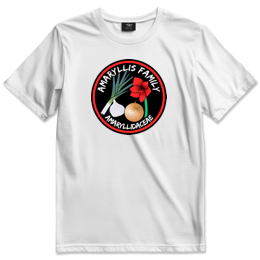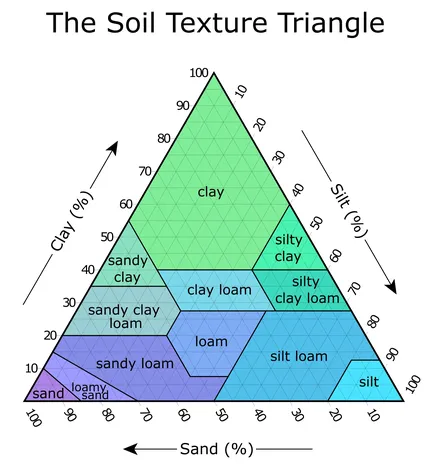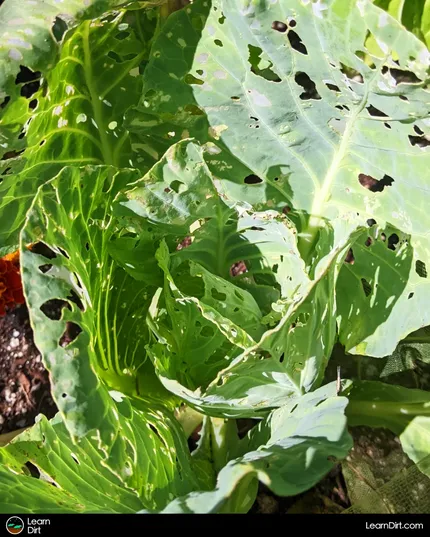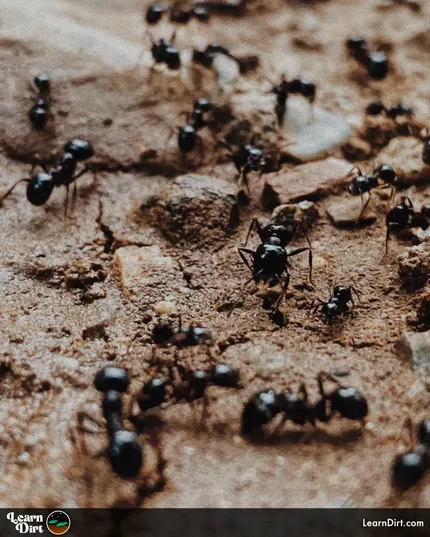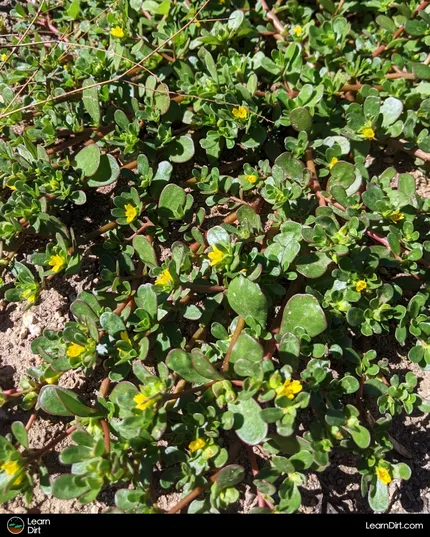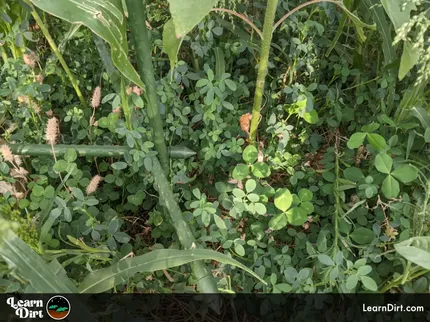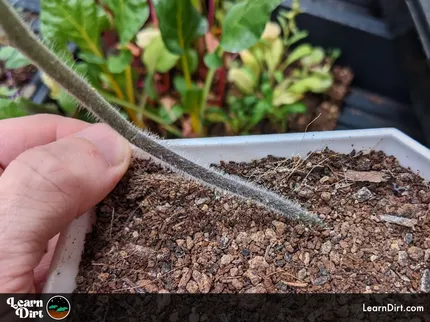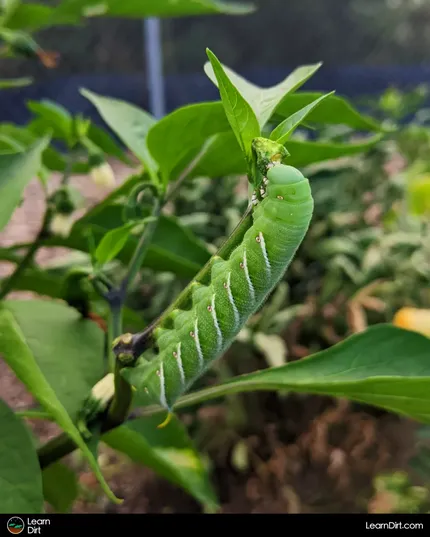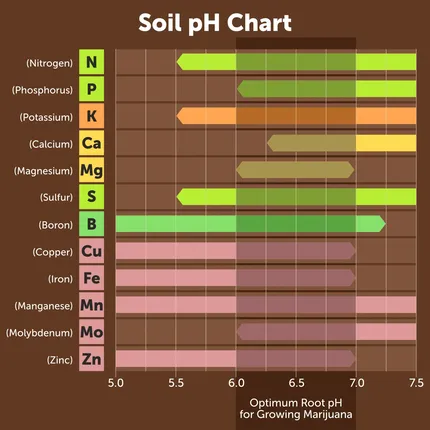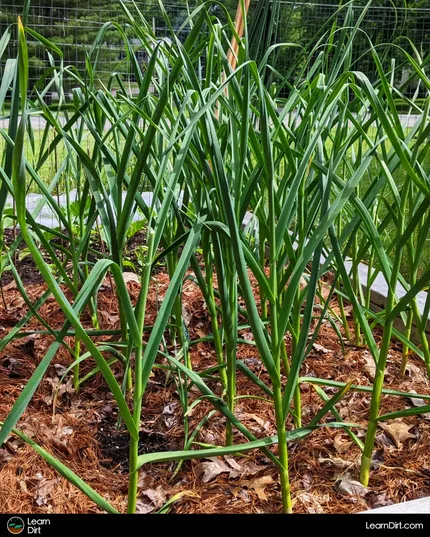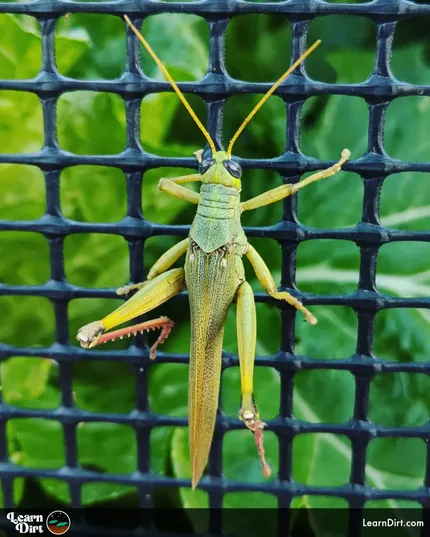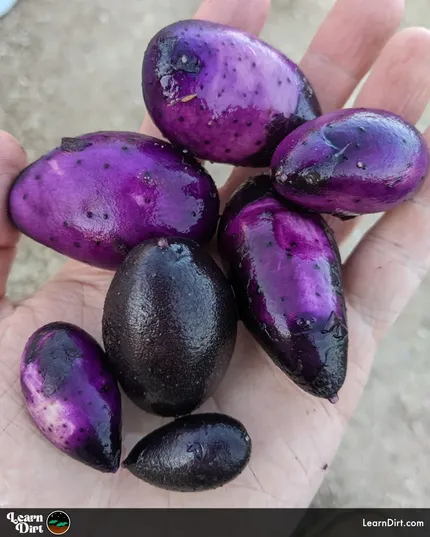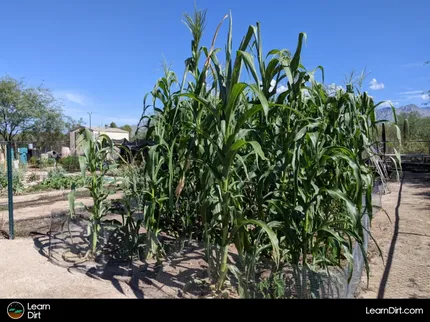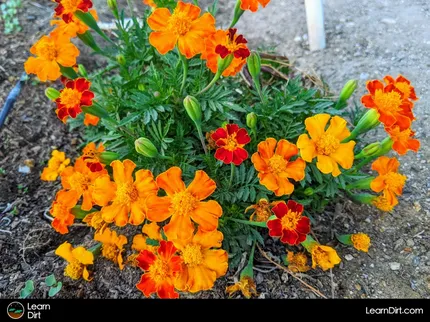Table of Contents
- Soil Not Absorbing Water
- How to Fix Hydrophobic Soil
- How to Make Soil Absorb More Water
- Additional Problems With Hydrophobic Soil
- FAQs
* Our articles never contain AI-generated slop *
Did you know that soil is naturally hydrophobic?
While moist soil readily absorbs water, once it dries out it becomes a different situation entirely.
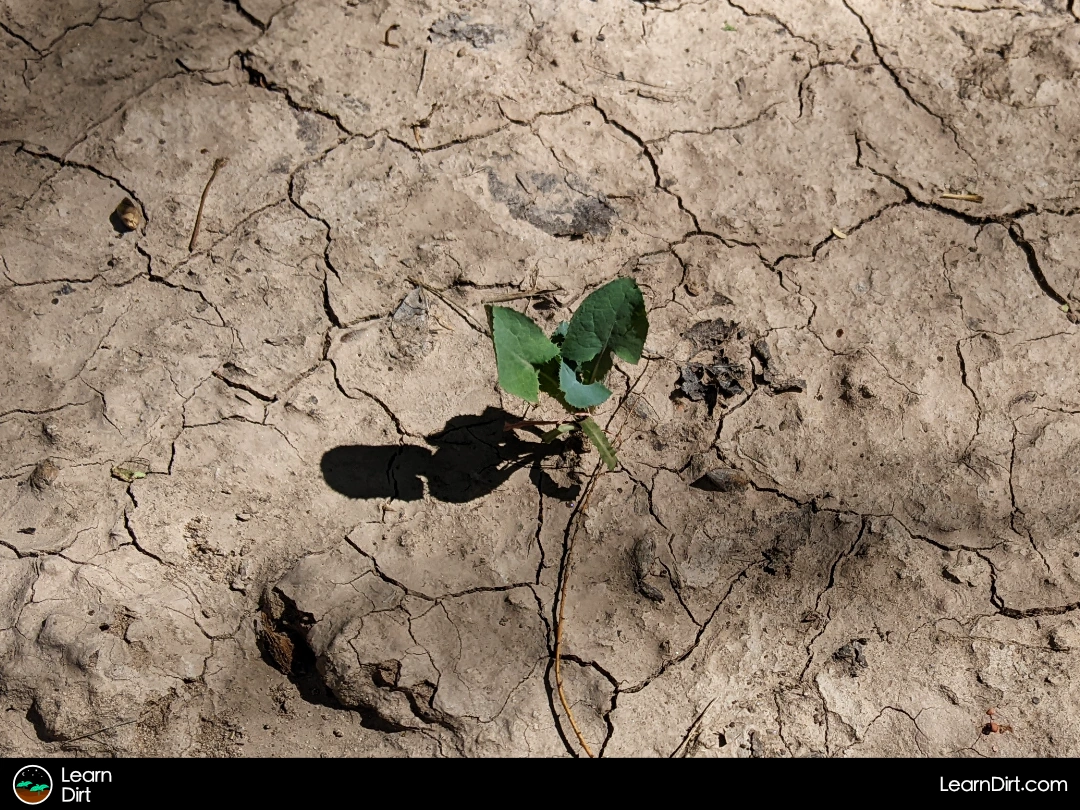
If the soil contains peat moss or coco peat, such as seed-starting or planting mix, this can be doubly-true. Peat moss and coco peat are especially hydrophobic when dry.
Disclaimer: This post may contain affiliate links. Refer to the privacy policy for more information.
Soil Not Absorbing Water
If your soil doesn't absorb water - not to worry! We've got some solutions here that'll help get your soil rehydrated and back an track.
Why Does Soil Become Hydrophobic?
Moist soil is quick to soak up water, because of water's adhesion to other water through capillary action.
Conversely, when soil becomes hydrophobic and dries out, it fills with air and repels water. Water droplets cling to each other but have difficulty infiltrating small pores in soil.
This effect can be compounded in clay soils where pore space is smallest.
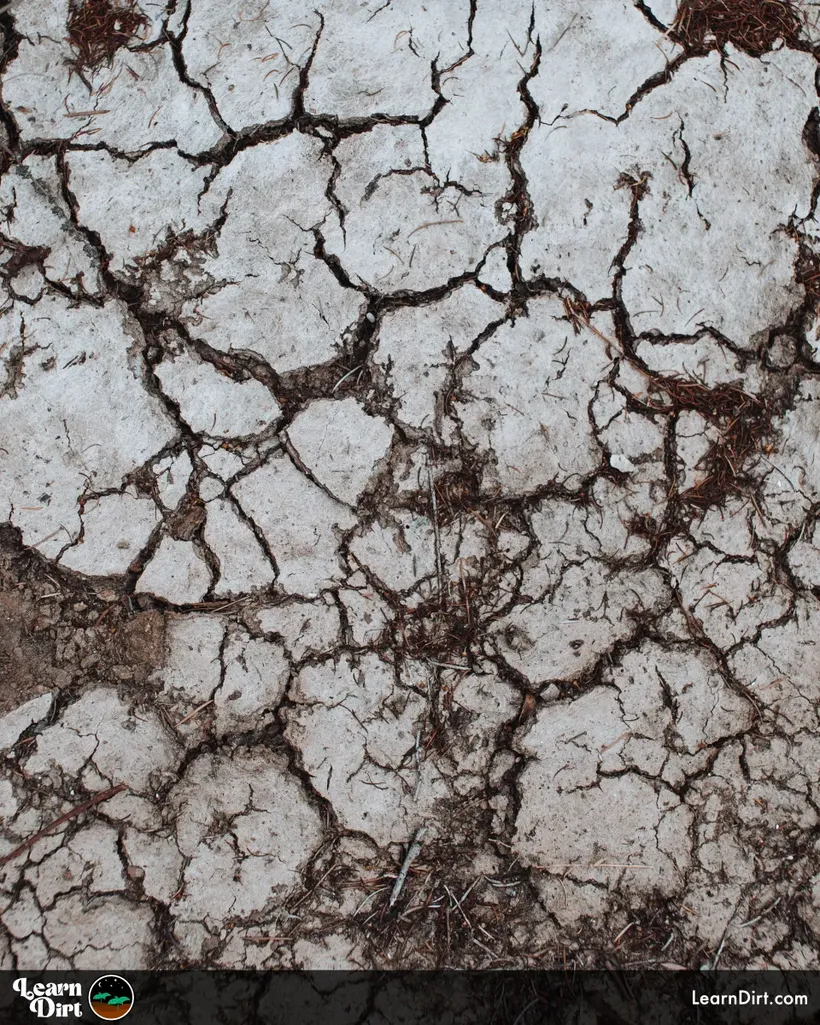
and wet soil is tough to dry
How to Tell if Soil Is Dry
It's easy to grab a pinch of soil and feel it, or stick your finger in the dirt to ascertain moisture levels near the surface.
How can you tell if your soil is dry way down below the surface, though?
Join The Grower's Community
Find your people.
Your voice matters here 🌱
Check It Out!
Your plants can be a good indicator, drooping when dry (though it can sometimes be hard to tell if they're too dry vs too wet).
I dust off the ol' moisture meter which gives me a quick reading on the amount of water in the soil down to a depth of 16" (40cm).
These things are invaluable for quickly getting a bead on what's going on with the moisture below the surface.
How to Fix Hydrophobic Soil
Rehydrating very dry soil can be a real test of your patience!
Let's get into how to rehydrate it, and why these methods work:
How to Rehydrate Soil
Now that we know what causes dry soil to repel water and become hydrophobic, let's look out how to solve it.
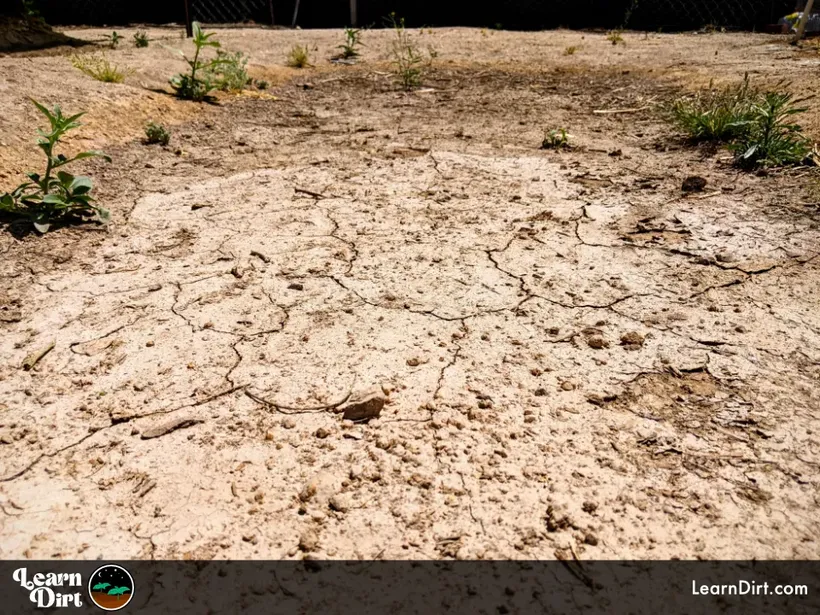
If you need to rehydrate soil, patience is the virtue for you.
Try one of these methods:
Bottom Watering
If you're dealing with planters, soil blocks, cell trays, or grow bags, bottom watering is a great way to let dry soil soak up moisture slowly.
Be patient, and eventually the soil will rehydrate on its own.
Irrigate Slowly
If you run drip lines, you've got the ability to rehydrate soil slowly with little effort. Just set your drip lines to run for short durations numerous times throughout the day. This will let the soil soak up the moisture little by little without flooding it.
If you've got the ability to change your drip line pressure, consider lowering the PSI if you need to slowly rehydrate soil - you'll get a slower flow rate. If you do this, though, just be sure that water still makes it all the way to the end of your lines! (ask me how I know)
Hand-Water Slowly
When all else fails, you can hand-water your soil slowly to rehydrate it. The drier it is, the slower you'll need to go at first.
Hand-water little by little, making sure to go slow enough that the water doesn't start to run away from ya.
You can also plug a hose into a raised bed or garden plot, and turn it on very low and let it run a while. Make sure the hose is buried under the mulch layer, and keep an eye on it to prevent overflow. The lower the hose is turned, the more time you're giving the dry soil to soak up the moisture.
Watering underneath the mulch layer like this helps it to absorb better and reduces evaporation - especially important in arid climates.
A hose nozzle with a fine showerhead also works wonders in helping to rehydrate hydrophobic soil.
For indoor planters, cell packs, and soil blocks, a pump sprayer works great. Just spray down your soil a little at a time, waiting a couple minutes in between for it to saturate.
Capillary Action in Soil
While gravity pulls water down through soil layers, capilary action is the way that water moves horizontally and even upwards through soil.
Capillary action is the force that helps moisten all your soil eventually after watering just one spot. It acts slowly but steadily, spreading water out and equalizing moisture levels throughout.
How Capillary Action Works
Water has both a strong cohesion property (droplets stick to one another) and a strong adhesion property (droplets stick to surfaces.)
Dig Cool Merch?
While dry hydrophobic soil can be difficult for wate to stick to initially, once it begins to absorb some water it's much easier for it to absorb more water.
When you manage to get your soil moistened a little bit, these adhesion and cohesion properties take over and soil begins to readily uptake more water.
Water adheres to micro-pores in soil, where it then attracts more water that coheres to it.
The result is the slow migration of water up and across soil in the same way that leaving a dry sponge or dry towel into a bowl of water will evetually lead to the whole thing becoming saturated.
How to Make Soil Absorb More Water
Dry soil is one thing, but if you're dealing with degraded soils they may not actually be capable of absorbing and storing enough water at all.
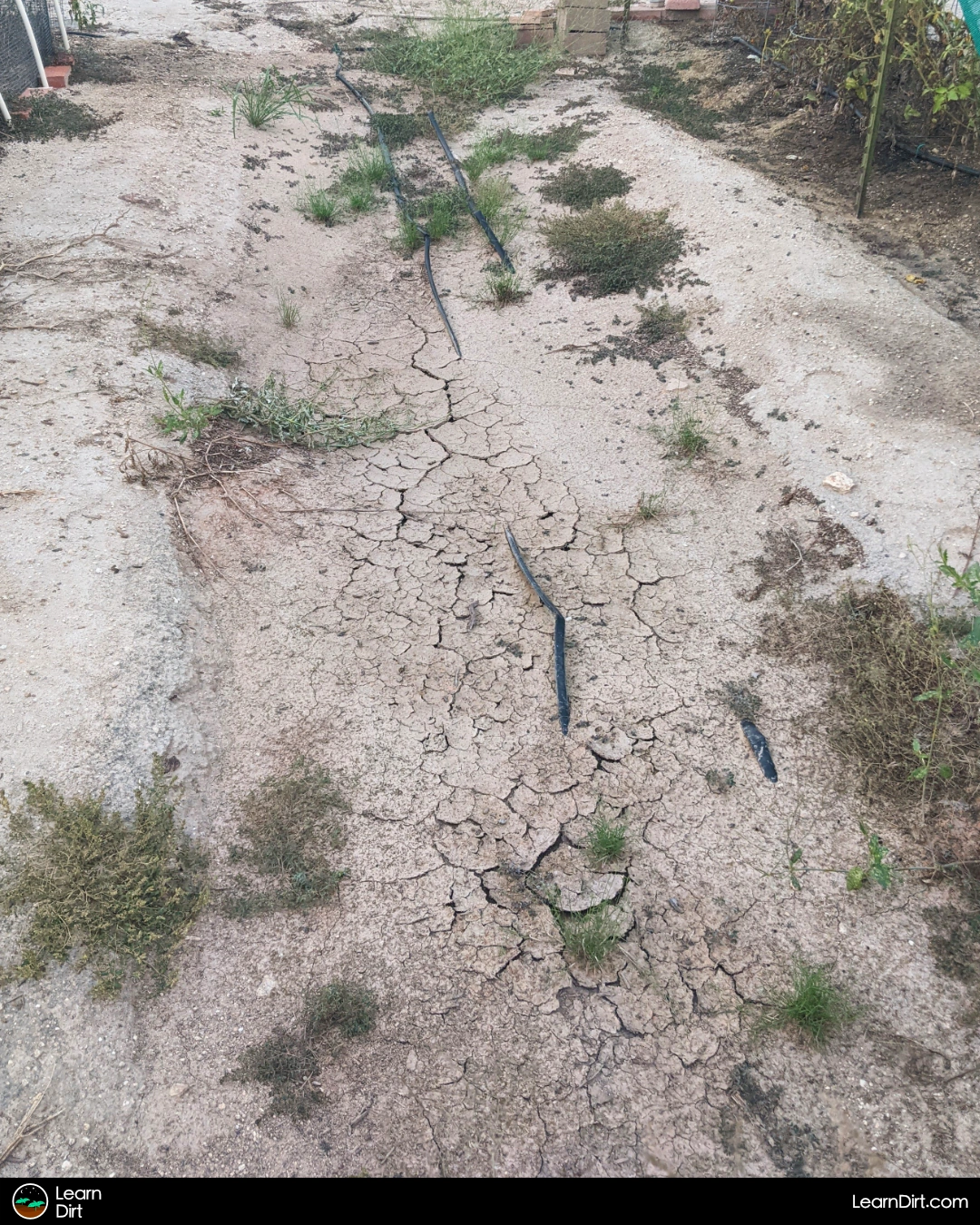
Water Holding Capacity
The holding capacity of your soil describes how much water it's capable of absorbing and holding onto at maximum saturation.
Soils with more clay, peat, and especially with higher organic matter contents have the highest holding capacities.
Sandy desert soils with little organic matter content, by contrast, can barely absorb any water at all.
Your soil falls somewhere on this spectrum and it can be empowering to know that your soil organic matter content (SOM) is under your control. It can be improved through thoughful land management and soil-building techniques.
Click here to learn all about soil organic matter, why it's important, and how to improve it.
Water Infiltration Rate
The infiltration rate of soil describes how quickly it's capable of uptaking water.
When soil becomes extremely dry and hydrophobic, the infiltration rate plummets. The difficulty you have in rehydrating it is a direct reflection of this low infiltration rate.
The following are all ways to increase the infiltration rate of soil so that it can soak up water faster:
- If it's dry, water it very lightly (mist work well). wait a while, and repeat. Gradual hydration is key.
- Add organic matter
- Add clay if the soil is lacking in it
- Add coco peat or peat moss
- Leave roots in the soil (chop at soil level) to create pathways for water
- Grow tillage crops like daikon and sweet potato to break up compaction
- Broad fork soil for additional water channels and decompaction
- Improve soil structure, for instance by adding gypsum
- Use an organic wetting agent
Additional Problems With Hydrophobic Soil
In planters and soil blocks, hydrophobic soil is little more than a nuisance. Slow rehydration will resolve the issue.
At a larger scale, however, dry hydrophobic soils can cause huge problems when they clash with large rain events.
Here in the desert Southwest, soils are often extremely dry and hydrophobic. When it does rain in the desert, it frequently happens all at once over a short period.
This can lead to catastrophic flash flood events as the dehydrated soil has lost all capillary action, and therefore, all ability to absorb water quickly.
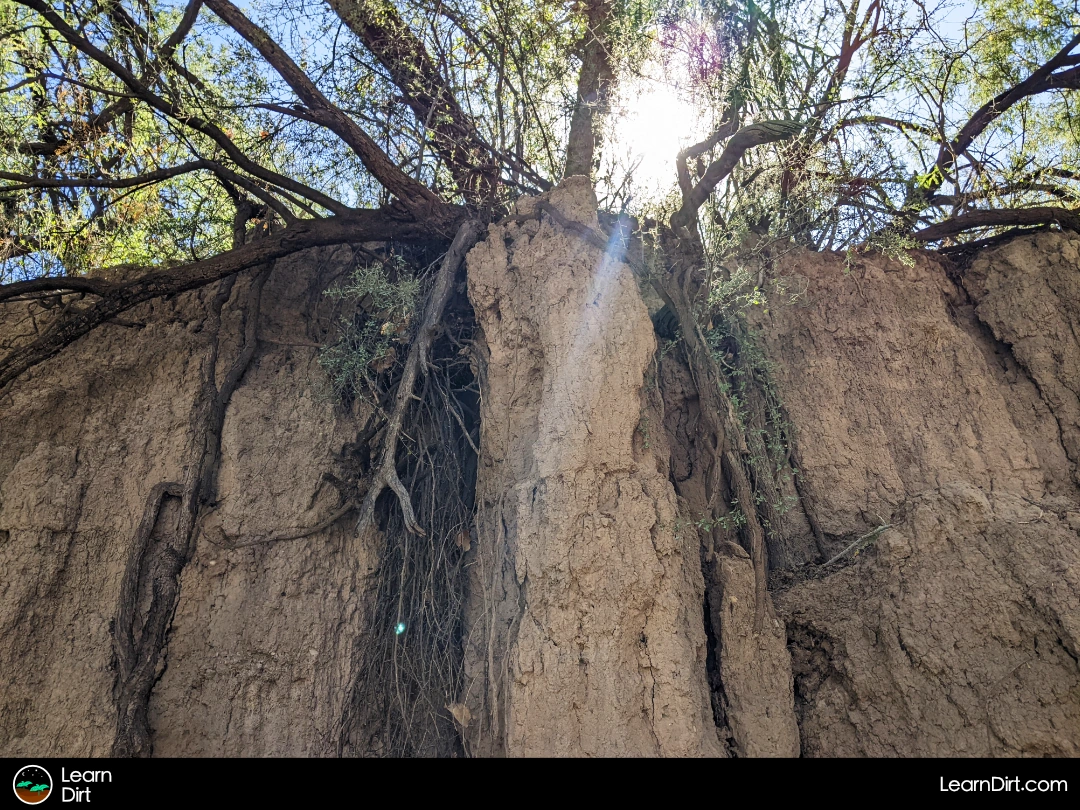
I saw less flooding when I lived on the East Coast (50" of rainfall / year) than I've seen in the Sonoran Desert (11" of rainfall / year). This is because East Coast soils are rarely dry enough to prevent absorption when it rains.
East Coast soils have an incredible ability to soak up and retain moisture during large rainfall events like a sponge.
By contrast, desert soils can be much more prone to flash-flooding when they dry out and their water infiltration rate plummets.
Stay safe around dry soils when there's flooding on the forecast! This can be extremely dangerous in combination. Stay away from low-lying areas, washes, and canyons.
FAQs
Why Does Dry Soil Not Absorb Water?
When soil dries out and becomes hydrophobic, you may notice that water just runs right off and doesn't saturate the dirt.
This can be common in dried-out planters and grow bags - you try to water only to have all the water pour right out the bottom without absorbing.
Dry soil in garden plots can reduce your gardens ability to absorb rainfall when it happens. This can create a negative feedback loop whereby dry soils can't handle the water which they do receive, and dry out even further.
This is especially common in desert regions or the contrast between extremely dry soil and extremely intense seasonal rainfall events maybe stark. These situations can become dangerous very quickly.
Does Sand Absorb Water?
Unlike clay and organic matter in soils which readily absorb water and hang onto it, sand absorbs basically no water at all.
This is why desert soils struggle to intake water when it finally does rain.
Instead, sand is often added to soils to help create macro-pores which gravity can pull water into.
While the sand itself doesn't absorb or hold water, it facilitates better drainage of water into and through soils, where clay and organic matter can soak it up.
That's all for now, thanks for reading!
If you have any questions, comments, or would like to connect with fellow gardeners, head on over to the forum and post there.



